Work Zone.
Posted on | May 14, 2015 | 1 Comment
The honeymoon stage in the garden was short-lived this year. Usually the cool weather keeps the spring crops enjoyably free of bug bites. But the slugs appeared in the lettuce and radish as soon the plants began to flourish. And, since I planted late this year, the summer crops were already under attack. I put my greenhouse transplants into the ground the first week of May. So far weeding and watering were my only concerns. But this week I dragged my arsenal of supplies out of the shed and started the real work of the season.
I noticed ants in 2 of the garden beds when I first put in the watermelons and the tomatoes. The red ants announced themselves to my ankles immediately upon my turning the soil with the trowel. Their tunnels were obvious and, not surprisingly, located close to the empty tires I use for sunflowers and zinnias. The black ants appeared as singletons as I planted, no signs of frantic retreat, attack, or egg carrying. I hoped cultivating the soil was enough to cause the red ants to relocate and that the paucity of the black ants meant they weren’t firmly established. Hah! The watermelon plants were nibbled to bits by black ants in the first week and caging the tomatoes was only accomplished in spurts between slapping red ants off my feet and calves.
So that end of the garden got a nice dusting of DE. Will these melons survive after being eaten from vigorous transplants into just a few leaves with a withered stem?
Probably. Maybe. Doesn’t matter. We have yet to get more than 1 or 2 watermelons out of the garden because we have trouble getting the harvest right. Despite all the tips we read for picking a ripe watermelon—-a cream or buttery yellow bottom instead of white; dull thump or thud sound when rapped with the knuckles; dry and browned tendril near the stem instead of green tendril; little contrast between the green stripes on the rind and the base color—-we rarely get it right. Watermelons around here are usually too white to eat or so red they’re mushy. Basically, we grow watermelons for the chickens, who get the discards and enjoy them so much that they eat every last bit all the way to a thin remainder of rind. Perhaps this year we are growing them for the ants.
Having learned my lesson the hard way, I dusted the entire bed set aside for peppers as soon as I turned the soil and before planting.
I put up the cages and labels, but I won’t bother mulching with straw until I see if the ant activity has died down. Mulching is always more difficult when the cages are up but starting pepper plants over from seed is even harder.
The small cabbage whites have been active since the weather warmed up. I left the winter kale in place to bolt and bloom in order to attract them and their destructive cabbage worms.
So far it worked and the spring kale was only lightly nibbled. These kale leaves are still good for kale chips and I won’t bother treating the plants with anything. Although I will have to check for worms as I cut out the ribs of the leaves. I’m not saying I’ve missed worms in the past, but there have been complaints.
The potatoes weren’t faring as well. Colorado potato beetles were already rampant. Adults were already laying eggs and larvae were present.
That meant getting out the Neem oil. Neem works well but it takes time. In general, Neem oil slows down the life cycle of the bugs—-eating, mating, egg laying—-until the population dies out. It doesn’t affect beneficial insects that don’t eat the leaves but it’s still best to spray Neem in the morning to avoid the oil saturating and smothering any beneficial bugs (especially bees) that are present. I’ve found that it works great on the Colorado potato beetles. But it took something else for these holes.
I’ve never seen exactly what it is that eats the green bean leaves. There doesn’t seem to be any visible pest. The plants will continue to grow and, once they are more mature, the damage stops so it is something that only enjoys young leaves. But I’ve found that a nice spray of Castille peppermint soap stops that leaf destruction. I have no idea if this is because the soap kills the invisible insect or just makes the taste or scent of the leaves unappealing. I just know that it works. So it was a nice round of Dr. Bronner’s for the green beans. Unfortunately peppermint soap doesn’t work on this leaf killer:
Flea beetles practically destroyed the eggplants in just the few days that I left them in the garden to harden off before planting. These beetles are always tough on young eggplant but they got way ahead of me this year. I wasn’t sure it was even worth planting this 9 pack.
But I put it in the ground anyway and the entire crop got a strong spray of pyrethrin. Pyrethrin is my least favorite organic pesticide and so I use it sparingly. It’s the strongest pesticide that I use because although it is an immediate killer, it is also indiscriminate. Whatever bug it touches, it kills. The good news is that once eggplant matures, the plant is less susceptible and doesn’t need any more treatments. The bad news is that by the time eggplant is big enough to thrive, the squash bugs will be present and the squash crop will need a a spray of pyrethrin every 7-10 days to keep them under control. Eh. As a back up plan, I purchased 2 eggplants from the local garden store in case my transplants don’t survive. There are actually 12 eggplants in this row. Only the 2 store-bought ones are thriving. Which will probably produce as much eggplant as the kids will tolerate anyway.
Of course, the garden sprayer wasn’t only used for pesticides. All the plants got a solid portion of fish emulsion to offset transplant woes and kick off green growth. I don’t use fish emulsion once there are veggies present because the smell contaminates everything in a 10 mile radius (That’s probably an exaggeration. Might only be a 5 mile radius.) but it’s excellent when the plants are just greenlings. In addition, the tomatoes needed a good dose of epsom salt as a foliar spray. This helps balance the calcium they get from the raw milk poured on their roots during the season. Calcium will compete with magnesium through root uptake and calcium almost always wins. So a nice dose of magnesium to the leaves with the epsom salt spray helps keep things evened out.
The tomatoes were already taking up their fair share of attention. They needed to be watered at the base to keep the roots moist and deep-growing as well as help prevent disease and fungus. The indeterminate types needed pruning (I will stay on top of tomato pruning this year. I will stay on top of tomato pruning this year. I will stay on top….). Most of the transplants had strong upright stems but a few varieties needed some early support and got braced with perennial stakes. All of them were labeled, labeled, labeled, to prevent confusion later on (I will keep my tomato plants properly labeled this year. I will keep my tomato plants properly labeled this year. I will keep my tomato plants properly labeled….).
I planted 42 tomato plants this year. Which was probably about 30 plants too many. But I got excited by a bright shiny catalog I received in January (Well played, Totally Tomatoes, well played.) and was tempted to try a bunch of new, colorful varieties—-black, purple, pink, yellow, striped, etc. The fancy colors didn’t germinate as well as the traditional varieties but that was a good thing. Any more tomato plants and the neighbor might have to take out an adverse possession lawsuit on me for planting tomatoes in his full-sun-over-an-acre-nothing-planted-only-used-as-a lawn-and-mowed-with-a-tractor front yard. A lawn. What the heck?? But I was curious to see if my transplants would catch up to the 2 tomatoes I bought this year.
I stopped by the flea market looking for parsley and found a man selling 3′ tall tomato transplants, already with blossoms. For $1.50 a plant. That’s right, people. Just when you’re happy with your production efforts, someone has to show you up. I bought 2 plants and consoled myself with the idea that I didn’t already have any Old Germans. Score one for the flea market. In the past I’ve found that bigger plants are so set back by transplant shock that smaller, younger plants will catch up quickly. If his tomatoes produce faster than mine, I might just send a Totally Tomatoes catalog to his house next year.
When I wasn’t messing with transplants I was fighting the spring crops to keep them from bolting before their replacements were established. Lettuce needed to be harvested, either for us or the barn yard almost daily.
The swiss chard was hanging in there but I had to repeatedly yank out the chickweed.
The spinach was probably done.
Even some of the onions had to tipped to keep them from blossoming.
I cut back the herb beds last. Because once you trim the cilantro everything within a 10 mile radius is cilantro-infused. (That’s probably an exaggeration. Might only be a 5 mile radius.)
Mowing, weeding, and mulching. Proper irrigation. Pest control. Fish emulsion, calcium, epsom salt, and compost. Trellises, cages, support stakes. Pruning, deadheading, nipping buds. While I sweated and toiled in the sun for the last 3 days, 200 pounds of pork slept in the shade or strolled around the dam, digging for roots and helping seal the pond (please, sweet babyback ribs, let those suckers seal the pond!).
Months of preparation and planning. Weeks of back-breaking hard work. And from the garden we’ve got leafy greens, radishes, and maybe, in a few more days, some peas to eat.
Every time I make a post about raising meat animals, I hear from the vegetarians. Perhaps this is because they think growing vegetables is easier than raising animals. Which it is as long as you are buying your vegetables from the store. Or supplementing what you can grow with what has been grown on someone else’s 100 acre garden with 100 employees. Perhaps they think growing vegetables is more humane. Which just means they haven’t crawled under squash plants using duct tape to remove and kill nymphs by the millions. Or read this. Perhaps they think vegetables are more sustainable which must mean they aren’t trying provide protein for a family of 6. Because if they had to grow enough protein for a family of 6 from their very own garden, they’d certainly have no free time for computer posts. Have you seen the shrinkage of leafy greens when they are sauteed? I mean, have you seen it??
I love the garden and everything that comes out of it. I don’t even really mind the work because garden chores mean I get to pass on the housecleaning and the gym for the day. Besides last night’s buttercrunch lettuce and spinach salad was delicious. Especially since I topped it thins strips of seared venison tenderloin. Melts in your mouth, people, melts in your mouth. 😉
Comments

One Response to “Work Zone.”
Leave a Reply
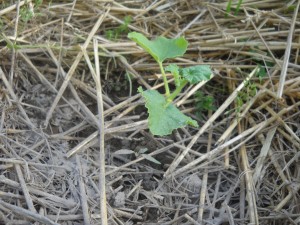
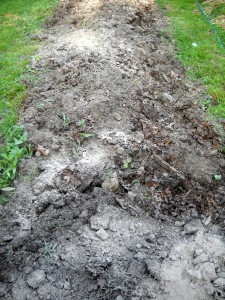
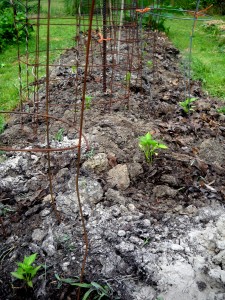
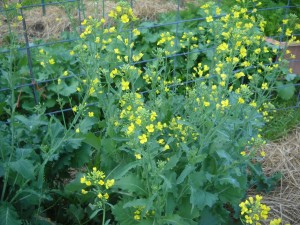
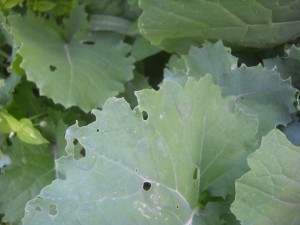
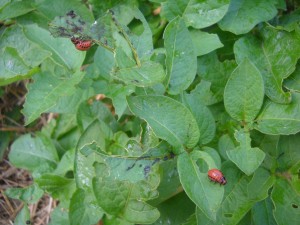
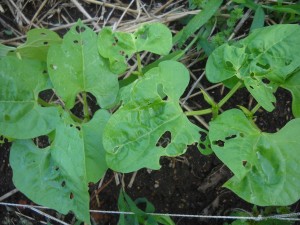
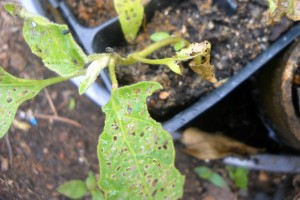
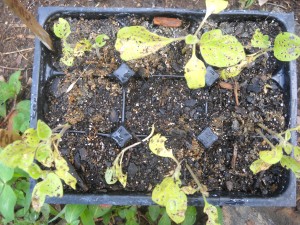
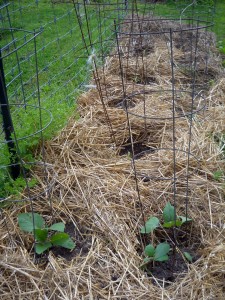
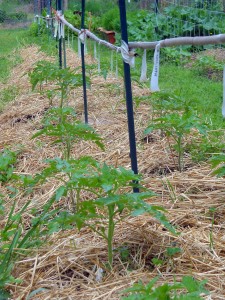
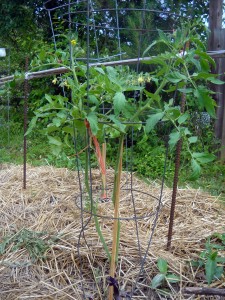
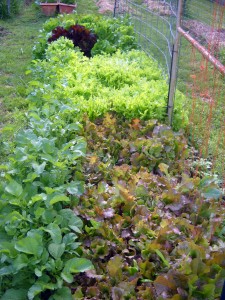
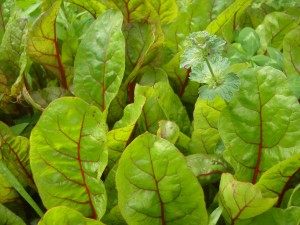
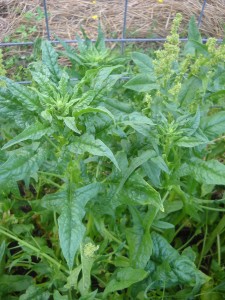
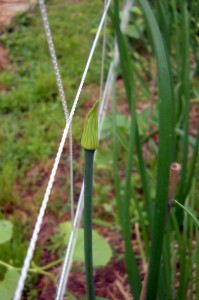
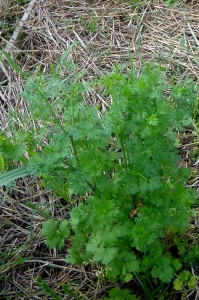
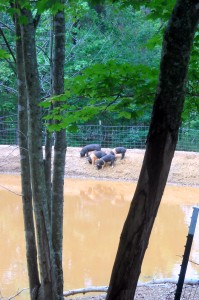
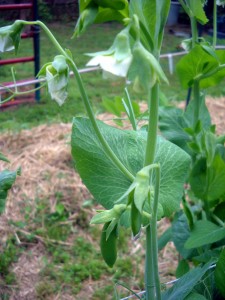



July 25th, 2016 @ 2:54 pm
Funny stuff! Maybe next year I will properly label my tomatoes. I’ve had enough practice with improper labeling now.